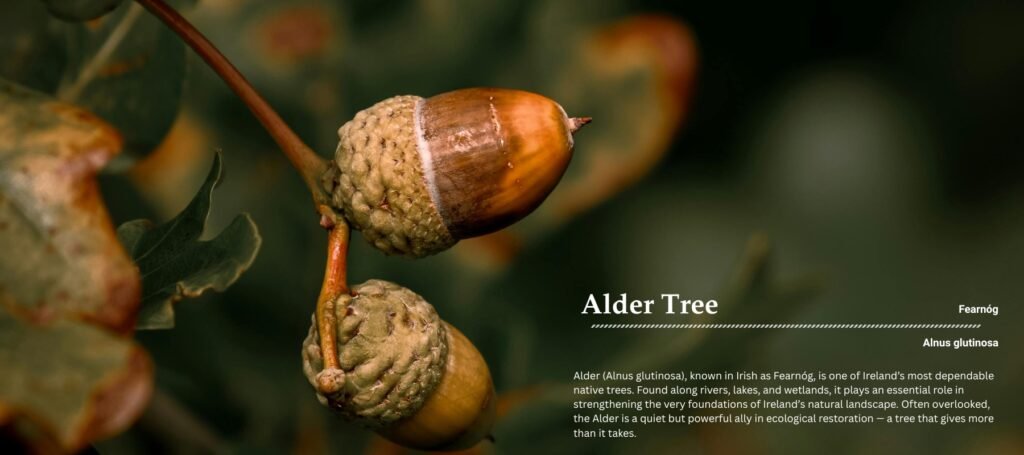Is Alder Native to Ireland?
Yes, the Alder is a native Irish tree species, naturally occurring across riverbanks, wet woodlands, and low-lying areas. It is perfectly adapted to Ireland’s damp climate and soft soils. Unlike most trees that struggle in waterlogged ground, Alder thrives in wet conditions, forming part of the natural woodland mix that once covered much of the country’s riparian zones.
Because it grows quickly and stabilises the soil, the Alder was historically one of the first trees to recolonise disturbed land, a true pioneer species that paves the way for other native trees to follow.
Ecological Importance – What Makes Alder Special?
The Alder is remarkable for its ability to improve the land around it. Its roots form a partnership with nitrogen-fixing bacteria, pulling nitrogen from the air and releasing it into the soil. This natural fertilisation process enriches the ground, allowing surrounding plants and trees to flourish.
Its roots knit together fragile riverbanks, preventing erosion and providing vital shelter for fish, insects, and other aquatic species. In early spring, Alder catkins provide some of the first pollen of the year, a lifeline for bees and pollinators emerging from winter.
For birds such as siskins and redpolls, the tiny winged seeds drifting down rivers are a crucial source of food. In every season, the Alder contributes to a living, interconnected ecosystem.
Uses and Characteristics of Alder Wood
Alder wood is unique among native timbers because it hardens when submerged in water. This property made it invaluable in Ireland’s past, used for crannóg foundations, sluice gates, bridges, and boatbuilding. When freshly cut, Alder’s pale wood releases a red sap that gave rise to myths of the tree “bleeding” to protect the land.
Irish Folklore and Cultural Significance
In Irish folklore, the Alder was considered a sacred guardian of water and balance. Under Brehon Law, cutting down an Alder was a serious offence, a recognition of its vital role in protecting riverbanks and supporting community life.
The red sap that oozes from freshly cut wood was said to be the tree’s blood, symbolising courage and defence. Warriors carried Alder shields, and the tree was associated with strength, protection, and the steadfast nature of those who stand firm in adversity.

